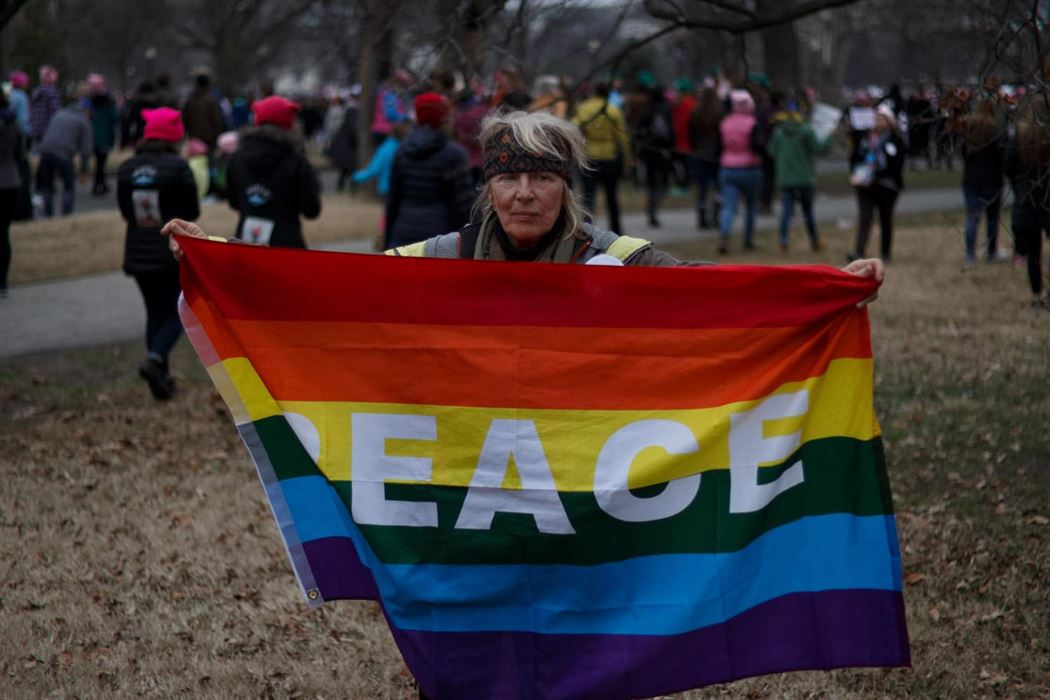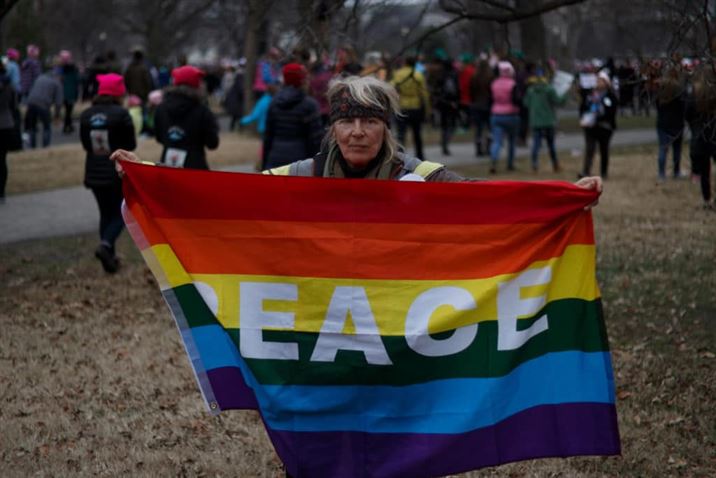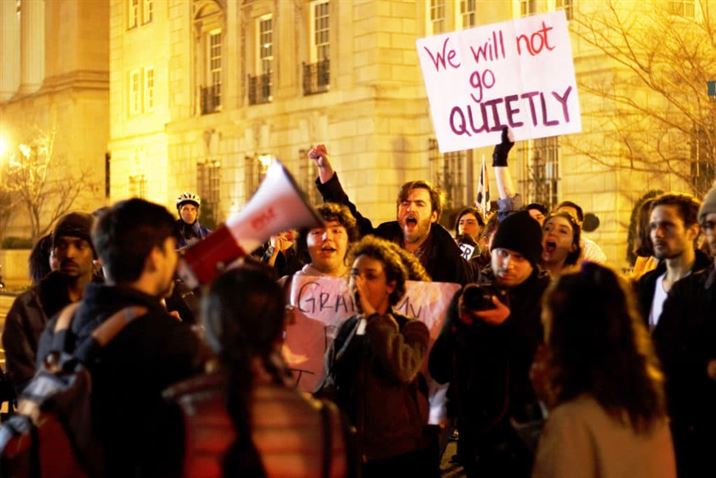Among the 470,000 people crammed in the streets of Washington, D.C., a handful of Montclair State University students and faculty paraded through the city at the Women’s March on Jan. 21 following President Donald Trump’s inauguration.
“This is my chance now to be a part of something that will be in history books,” explained junior history major Ava Scheffler, who traveled from her home in south Jersey with her mom and 87-year-old grandmother to meet her aunt outside of D.C. “A family affair” was her way of describing their five-hour trek in I-95 South traffic on Friday night.
“All the cars were [from] northern states—like Massachusetts, Vermont, Rhode Island—just driving down all with Hillary signs and signs saying ‘I’m going to the march,’” she said. “It was just so obvious everyone was also going down for it, so it alleviated your anger at the traffic.”
Those who opted to ride the metro to the march faced similar delays. Student Eliza Gentry, who traveled from Bethesda, Maryland, explained in a Montclarion article that, though the line that wrapped around the metro entrance caused an hour wait, the unity of the group, which she described as “orderly and cheerful,” was unlike anything she’d seen before.
“As we stood in line, we chanted and whooped at cars that honked while passing,” she wrote. “People were crammed onto the train, but rather than cursing under their breath like I am used to seeing, they were asking their neighbors if they felt comfortable or if they needed food and water.”
Senior television and digital media major Michael Gorczyca noted of the gathered crowd, “I had never seen that many people at once, in one place, in my lifetime.”
Though he originally planned to attend the march to help a friend shoot photos and video, Gorczyca explained, “When it got closer and closer, that’s when I finally realized the magnitude of it.”
He went on to explain that the march was the second event of its type that he’d been a part of—the first of which was a Bernie Sanders rally. I dont want to say that women couldn’t do it alone, because they absolutely are capable,”
Gorczyca said, explaining that men and women, children and elderly were present at the march. “But I think it’s so important for men to be involved as well.”
Scheffler and her entourage of relatives displayed handmade signs with messages like: “Viva la Vulva,” “Grab Back” and the word “Mine” spelled out across a silhouette of a women’s body. She explained that the most important issue she was fighting against was the defunding of Planned Parenthood, a service which she has used in the past.
“I mean they offer abortions, but that’s not even a third of what they’re giving out to people,” Scheffler said. “So the fact that they’re trying to defund such a public and easily-accessible resource for women to get a Pap smear or breast cancer screening or an abortion or birth control…it’s sad to me.
Some of Gentry’s favorite chants of the day included: “Tiny hands! Stupid hair! Stay out of my underwear!”, “Who are we? The popular vote!”, “No hate! No fear! Everyone is welcome here!” and “Racist, sexist, anti-gay! Donald Trump, go away!”
Though advertised as an event advocating for women’s rights, Scheffler noted that the signs and chants echoed a larger purpose. “It didn’t feel like it was just for women’s rights,” she said. “It felt like it was for all minorities who feel like all of a sudden we’re not progressing forward, we’re stepping backward in terms of our rights and equality.”
“We’re still Americans, Scheffler concluded. “We can’t just say he’s not my president, because he is our president, so we have to try our best to get our word out there and be heard by our senators… There was so much energy and so much passion there. I kept thinking to myself, ‘What am I going to do with this energy tomorrow?’ After this is over, I want this to have a lasting effect.”





